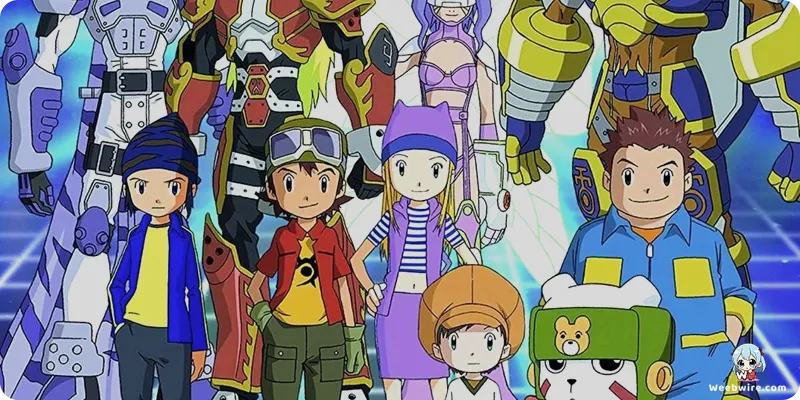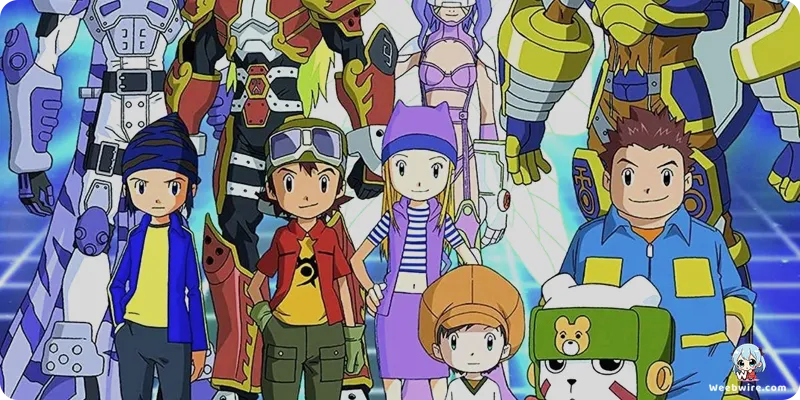Digimon Frontier: Unearthing the Groundbreaking Shift That Transformed the Franchise

In a bold departure from its foundational premise, Digimon Frontier, the 2002 fourth television installment from Toei Animation, fundamentally redefined the beloved Digimon franchise. Eschewing the traditional human-Digimon partnership, this groundbreaking series plunged its human protagonists directly into the heart of digital combat, transforming them into Digimon themselves. This radical shift was more than a mere narrative tweak; it was a profound paradigm change that reshaped character arcs, thematic explorations, and the very essence of the Digital World, solidifying Frontier's place as one of the most distinctive and often debated seasons in the franchise's rich history.
The Spirit Evolution System
At the core of this innovation lies the Spirit Evolution system. The human leads—Takuya Kanbara, Koji Minamoto, Izumi Orimoto, Junpei Shibayama, and Tomoki Himi—uncover ancient Digi-Spirits imbued with the power of the Ten Legendary Warriors. These mystical artifacts empower the children to physically manifest as formidable humanoid Digimon like Agunimon, Lobomon, Fairymon, Beetlemon, and Kumamon. This unprecedented fusion of human and digital identity birthed new storytelling avenues, emphasizing profound self-discovery and the intense internal struggles faced by the characters as they navigated their newfound powers and daunting responsibilities. The system expanded further with Beast Spirits, culminating in powerful Fusion and Unified Spirit Evolutions, giving rise to mega-level beings such as EmperorGreymon and MagnaGarurumon, demanding a new strategic depth from its young heroes.
A Bold Narrative Choice: No Partner Digimon
A less-publicized, yet pivotal, decision behind Digimon Frontier was the deliberate removal of traditional partner Digimon. Creators aimed to amplify human agency, compelling the children to confront their fears and weaknesses head-on, with their own evolving bodies serving as the battleground. This creative choice fostered a deeply introspective journey for each protagonist, particularly Takuya and Koji, whose evolving rivalry and eventual friendship formed the series' emotional bedrock. By focusing solely on the human children's growth, their capacity for self-reliance, and their ability to responsibly wield immense power, Frontier carved its unique niche, earning a distinct identity even amidst initial fan skepticism.
Artistic and World Design Innovations
The series also boasted notable artistic and vocal choices. Veteran Digimon character designer Katsuyoshi Nakatsuru crafted slightly more mature and distinct human designs. Furthermore, beloved voice actors from previous Digimon installments returned to new roles, maintaining a subtle continuity for Japanese audiences. For instance, Junko Takeuchi, renowned for her role as Gomamon in Digimon Adventure, took on the lead as Takuya Kanbara, a testament to the franchise's enduring legacy while forging new narrative paths.
The Digital World itself in Digimon Frontier presented a novel, segmented structure. Unlike the organic sprawl of prior seasons, this world was divided into distinct 'areas' connected by a network of trails, with the iconic Trailmon trains serving as the primary mode of transport. This rail-based system imbued parts of the world with an almost industrial feel, facilitating sequential exploration of diverse environments. The overarching narrative, revolving around the corrupted Digimon Angels—Cherubimon, Ophanimon, and Seraphimon—and the ultimate antagonist Lucemon, delved into potent themes of corruption, redemption, and the delicate balance of light and darkness within the Digital World, personified through the children's quest to unite the spirits.

Enduring Legacy and Fan Reception
Despite its initially divisive reception, Digimon Frontier has cultivated a passionate cult following. Fans commend its audacious innovation and character-driven narratives, particularly the intense emotional journeys of its main cast. The series' unique take on evolution, coupled with Toei Animation's vibrant visuals and a memorable soundtrack, cemented its place as a significant, albeit unconventional, chapter in the Digimon saga. It fearlessly pushed the boundaries of what a Digimon story could be, proving the franchise's willingness to evolve and experiment alongside its dedicated audience. This courage to deviate from a successful formula remains a powerful testament to the creative ambition behind Digimon Frontier, making it a compelling case study in franchise development and a treasure trove of unique facts for any Digimon enthusiast.
}Credits
Digimon Frontier
Author
Akiyoshi Hongo
Cover Art
Katsuyoshi Nakatsuru
Studio
Toei Animation
Publisher
Bandai
Producers





